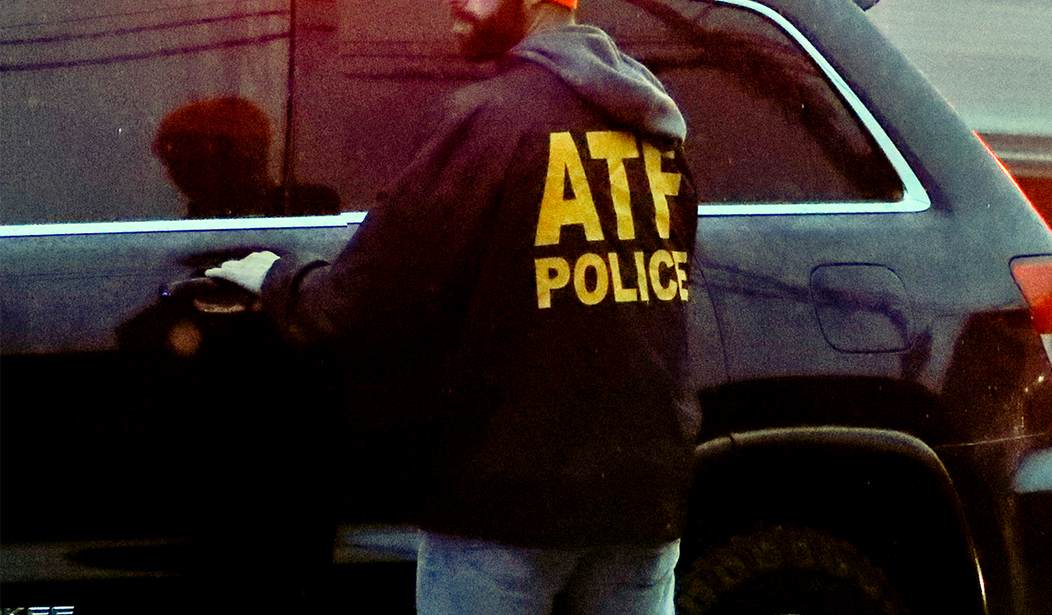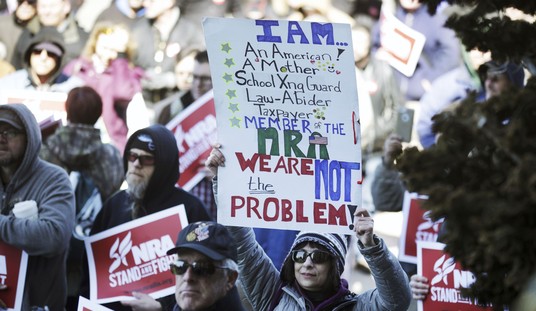After Thursday's House Judiciary Committee hearing that featured more than three hours of back and forth between committee members and ATF Director Steve Dettelbach, the agency's raid on the home of Little Rock, Arkansas airport executive Bryan Malinowski has become a national news story. Gun owners and Second Amendment groups have been talking about the botched raid that led to Malinowski's death for several months, and it's been big news in Little Rock, but it hasn't received a lot of attention from national news outlets.
The New York Times is one of the first big outlets to extensively report on the raid, and surprisingly, its coverage isn't as awful as I expected.
The loud noises outside their bedroom door woke them before dawn. Bryan Malinowski bolted up and looked at his wife, Maer. “Stay back,” she remembers him saying after he reached into a drawer for his gun and loaded it.
He crept into a hallway in their home in Little Rock, Arkansas, and saw figures in the darkness. He started shooting, and was met with return fire.
The people shooting back at him were agents with the Bureau of Alcohol, Tobacco, Firearms and Explosives, executing a search warrant on suspicion that Malinowski had repeatedly sold guns without a license. What made this different from many such confrontations was that Malinowski was a respected official in the community, the director of Little Rock’s airport.
Malinowski shot an agent in the foot. As the agents fired back, a bullet struck Malinowski, 53, in the head, and two days later, he died in a hospital. His death has been met with outrage by his family, friends and gun rights supporters in Arkansas and beyond, who say the raid on March 19 was ill-conceived, unnecessary and a shocking case of government overreach.
“Why couldn’t this be avoided?” Maer Malinowski asked in a recent interview at her home, where newly patched bullet holes lined the olive-toned walls.
That's a pretty strong lede, and it presents Malinowski and his family in a fairly sympathetic light. My biggest critique of the Times story is that while reporter Eduardo Medina acknowledges the outrage over the circumstances of the ATF's raid, he gives far more space to "experts" defending the agency's actions than those who've found fault with the tactics used by agents.
Video footage obtained by the Times shows that 57 seconds passed from the moment that agents placed tape over Malinowski’s doorbell camera to when shots were detected by a neighbor’s security camera. The agents were not wearing body cameras; Dettelbach said at Thursday’s hearing that while the ATF has started requiring them, the policy has not yet been implemented in Little Rock.
Ken Gray, a former FBI agent, said it is standard procedure for federal law enforcement to conduct a raid early in the morning and to be armed, especially in a case involving someone who buys and sells guns.
Of course police are going to be armed when they're executing a search warrant. And early morning raids may be standard, but that doesn't mean that the tactics used by the agents during that early morning raid were the only way to serve the warrant. Former ATF assistant deputy director Pete Forcelli had a much different take when he spoke to Bearing Arms about the raid.
"Here's a guy who worked in an airport, which is a pretty sterile environment," Forcelli told me. While Forcelli says there might have been a reason why the raid was staged the way it was, he believes it wasn't the only way for the operation to take place.
"They could have had a local police officer stop him on the way to work, walk up on the car, 'hey we have a warrant, we need to go back to the house and search it.' They could have gone to his employer, again the airport is a very sterile environment, approached him there [with a warrant]."
Forcelli says he's also curious why the agents didn't use a tactic called "Surround and Call Out", where agents will knock on the door, back off, call out the occupants of the home, and then execute the warrant. That sounds like it would generally be safer for everyone involved, so why wasn't this strategy deployed when executing a warrant against a guy accused of the non-violent crime of selling firearms without a license?
Even if the NYTimes gives too much deference to defenders of the ATF's actions, they paint a positive picture of Malinowski himself. Media spoke to family members, friends, and fellow gun show vendors, none of whom raised any red flags about his behavior. And Medina also points out that some of the details laid out by federal law enforcement in their affidavit aren't as nefarious as the ATF made it seem.
Some details in the ATF’s affidavit have been contested by Malinowski’s family, including a passage saying that he drove around neighborhoods in North Little Rock in an “erratic” manner as he pulled into parking lots and turned around. The affidavit states that Malinowski drove at night to dangerous areas “known for violent crime” and other illicit activities, but that agents did not observe him meeting anyone.
His family insists that Malinowski, who had a history of buying rental properties, was simply searching for another investment, and that he sometimes went to poker nights at friends’ homes in the area.
At worst, Malinowski was guilty of what's essentially a paperwork crime; acting as a gun dealer without the required federal firearms license. There've been no allegations by the ATF or local law enforcement in Little Rock that Malinowski was engaged in any violent activity, and family and friends say he truly believed that he wasn't violating any law by selling firearms at a gun show.
During Dettelbach's testimony before the House Judiciary Committee, the ATF director pushed back on the suggestion that the agency is revoking FFL's for clerical errors and other paperwork violations, telling the committee that agents routinely work with FFL's to "cure defects" instead of trying to shut them down. I have my doubts about the accuracy of Dettelbach's statement, but let's assume for the sake of argument that it's true. Why didn't the agents investigating Malinowski reach out to him to advise that he needed to get an FFL instead of stacking up outside the door of his Little Rock home and bashing in his front door?
My suspicion is that the agency wanted to send a message to gun owners ahead of the agency's new interpretation of the "engaged in the business" rule taking effect; get your FFL or you're going to prison. There was no upside in talking to Malinowski and allowing him to cure the "defect" of not having an FFL if the Biden administration was hoping to scare gun owners into submission.
Kerry Murphy, who runs gun shows where Malinowski was a vendor, said nothing nefarious stuck out about him.
“If you would have told me to pick anyone in the building, he would have been the last one,” Murphy said, adding that in his experience, Malinowski mostly sold ammunition.
Murphy said that about 40 vendors had pulled out of his most recent gun show, in Little Rock, because of their concerns over the ATF’s raid on Malinowski.
“They don’t want to be made an example out of,” he said. “They sell their collections, they sell their personal stuff. And they’re all scared.”
And that's exactly what Joe Biden and his anti-gun lackeys want. They've come up with a rule that's so vague no one really knows when they've crossed that invisible line between a lawful private sale or becoming an "unlicensed gun dealer". Many gun owners will choose to simply not sell any of their firearms in a private sale for fear of prosecution or worse. As far as the anti-gunners are concerned, that's not a bug in the rule, but a feature.









Join the conversation as a VIP Member